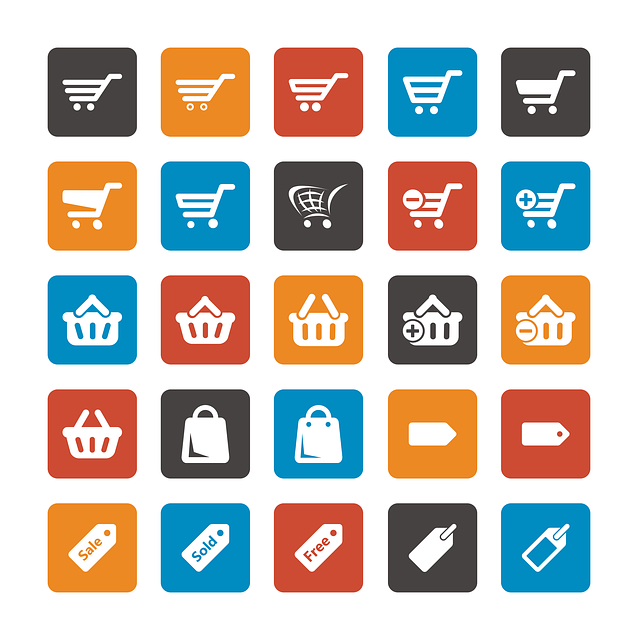An effective ecommerce store design segmenting target audiences, optimizing for mobile users, integrating interactive features, and measuring performance are key drivers of success in today's digital landscape. By prioritizing user-friendly layouts, intuitive navigation, high-quality visuals, concise descriptions, and strategic calls-to-action, small businesses can create compelling narratives that resonate with their audience, boost conversions, and foster customer loyalty. Choosing the right platform and continually analyzing performance through tools like Google Analytics ensures a design that stays competitive and aligned with evolving market needs.
In today’s digital era, a well-designed e-commerce store is pivotal for small businesses aiming to thrive online. This comprehensive guide explores the intricacies of crafting an engaging and effective e-commerce store design. From understanding your target audience to implementing strategic call-to-actions, we delve into key elements like website layout optimization, mobile usability, and impactful visuals. By the end, you’ll be equipped with insights to create a successful online storefront that drives conversions and fosters growth.
Understanding Your Target Audience for Effective E-commerce Store Design

To create an effective ecommerce store design, knowing your target audience is paramount. Understanding their demographics, preferences, and shopping behaviors allows for a tailored design that resonates with them. For instance, if your target market includes younger, tech-savvy individuals, incorporating interactive elements and mobile responsiveness might be crucial. Conversely, an older demographic may prefer simplicity and clear product information.
By segmenting your audience, you can further personalize the experience. This could involve offering specific product categories or layouts that cater to different buyer personas. Remember, a well-designed ecommerce store isn’t just visually appealing; it’s user-centric, making it easy for customers to find what they want and making their purchasing journey seamless.
Key Elements of a Successful E-commerce Website Layout

A well-designed e-commerce store is essential for small businesses looking to thrive in the digital marketplace. The layout should be user-friendly, intuitive, and optimized for various devices. One key element is a clear and organized navigation system, allowing customers to browse products effortlessly. A clean, uncluttered design with consistent branding enhances the overall shopping experience. Product pages should include high-quality images, detailed descriptions, customer reviews, and easy-to-find call-to-action buttons for seamless purchasing.
Effective use of white space, compelling visual elements, and strategic placement of CTAs can significantly improve conversion rates. Additionally, a search bar and intuitive filtering options enable customers to locate specific products quickly. Mobile optimization is crucial as many users shop via smartphones, ensuring fast loading times and responsive design. A successful e-commerce store layout also incorporates social proof through customer testimonials and trust badges, building confidence in potential buyers.
Choosing the Right E-commerce Platform for Your Small Business

When setting up an online presence, selecting the suitable e-commerce platform is a pivotal step for small businesses. It’s not just about choosing software; it’s tailoring your digital storefront to match your brand and business goals. Consider factors like ease of use, cost, features (like inventory management, payment gateways, and shipping options), and scalability—especially as your business grows.
Popular options like Shopify, WooCommerce, and BigCommerce offer a range of templates and customization tools, making it possible for even novice entrepreneurs to craft an engaging e-commerce store design. These platforms also provide robust analytics, helping you track sales and customer behavior, which is key to refining your online store and enhancing the user experience.
Creating an Engaging and User-Friendly Product Browsing Experience

An engaging and user-friendly product browsing experience is pivotal for the success of any ecommerce store design. Small businesses should focus on intuitive navigation, high-quality visuals, and concise product descriptions to captivate their target audience. A well-organized layout, with relevant filters and sorting options, enables customers to find what they need swiftly. Mobile responsiveness is also critical, ensuring a seamless experience across various devices.
By incorporating these elements into the ecommerce store design, small businesses can foster higher engagement and conversion rates. Visual appeal, coupled with easy navigation, encourages users to explore products extensively. Additionally, user-generated content like reviews and ratings builds trust, influencing purchasing decisions. Ultimately, a well-designed browsing experience translates to happier customers and stronger business growth.
Optimizing Your E-commerce Store for Mobile Users

In today’s digital era, optimizing your ecommerce store for mobile users is no longer an option but a necessity. With a majority of online shoppers using their smartphones and tablets to browse and purchase products, ensuring your store design is mobile-friendly is crucial for attracting and retaining customers. A seamless mobile experience means easy navigation, quick loading times, and responsive layouts that adapt to different screen sizes. Invest in a design that prioritizes user interface (UI) and user experience (UX) elements, such as clear call-to-action buttons, simplified checkout processes, and optimized product images for mobile viewing.
A well-designed ecommerce store not only caters to mobile users but also boosts overall conversion rates. Mobile shoppers often have shorter attention spans and are more likely to abandon their carts if the site isn’t optimized for speed and ease of use. By optimizing your store for mobile, you create a user-friendly environment that encourages browsing, fosters trust, and increases the likelihood of sales. Additionally, mobile optimization is a key factor in search engine algorithms, which can significantly impact your online visibility and drive organic traffic to your ecommerce store design.
Implementing Visuals and Copywriting to Enhance Conversion Rates

A well-designed ecommerce store goes beyond aesthetics; it tells a compelling story that resonates with your target audience, driving conversions. Integrate high-quality visuals – product photos, graphics, and videos – that showcase your products’ features and benefits in a visually appealing manner. These elements not only catch the eye but also build trust and credibility, encouraging shoppers to engage.
Complementing these visuals is powerful copywriting that speaks directly to customers’ needs and desires. Use clear, concise language to describe products, highlighting key advantages and addressing common objections. Incorporate compelling calls-to-action (CTAs) that guide users through the buying process, prompting them to add items to their cart or complete a purchase. By seamlessly blending impactful visuals and persuasive copywriting within your ecommerce store design, you can create an environment that fosters engagement and drives higher conversion rates.
Leveraging Call-to-Actions (CTAs) Strategically within Your Store Design

E-commerce stores are not just digital shop fronts; they’re interactive spaces that can guide customers through their purchasing journey. Leveraging Call-to-Actions (CTAs) strategically within your store design is a powerful way to nudge visitors towards conversions. Place CTAs at key moments, such as product pages and checkout processes, using compelling language and contrasting visuals to stand out against the background. Make them clear, specific, and easy to follow—for instance, instead of “Buy Now,” try “Add to Cart” or “Shop Now.”
Remember that effective CTAs aren’t just about immediate purchases; they can also encourage email sign-ups, product reviews, or social media shares. Tailor your messaging based on the user’s stage in the buyer’s journey. For new visitors, CTAs might focus on raising awareness and fostering interest. As users progress, CTAs should become more direct, offering exclusive deals or personalized recommendations to close the sale. This strategic approach ensures that your store design not only attracts but also converts visitors into loyal customers.
Measuring and Analyzing E-commerce Store Performance for Continuous Improvement

Measuring and analyzing your e-commerce store’s performance is an iterative process vital for any small business aiming to excel in the competitive online market. By tracking key metrics such as conversion rates, customer acquisition costs, and average order value, you gain invaluable insights into what’s working and what needs improvement within your ecommerce store design. Tools like Google Analytics become indispensable allies, offering detailed reports on user behavior, allowing you to optimize not just the look but also the functionality of your online storefront.
Continuous improvement is key; regular analysis empowers you to make data-driven decisions that enhance user experience, boost sales, and increase customer satisfaction. This involves testing different layouts, call-to-action buttons, or promotional offers to see what resonates best with your audience. Through this process, you refine your ecommerce store design, ensuring it remains competitive, appealing, and aligned with the evolving needs and preferences of your target market.
